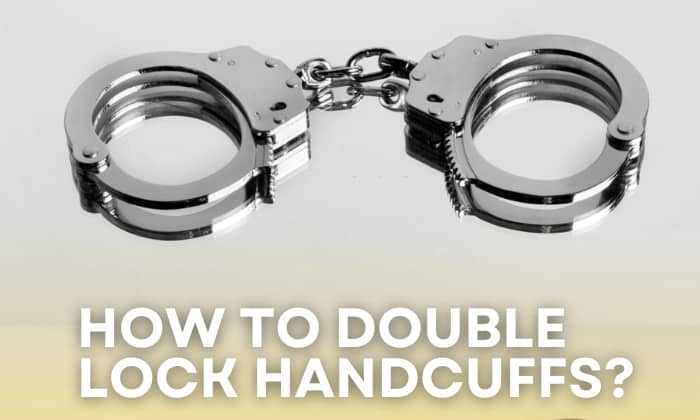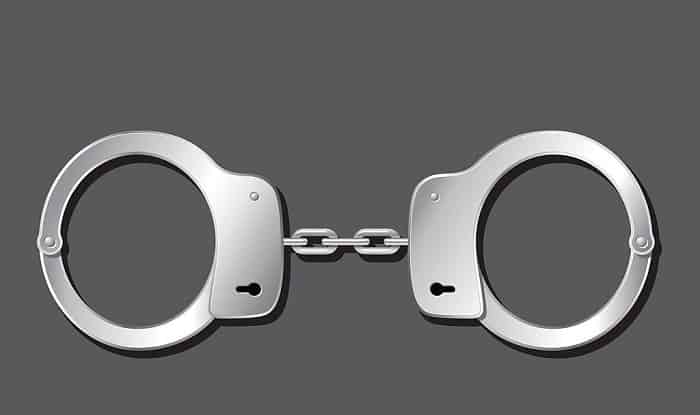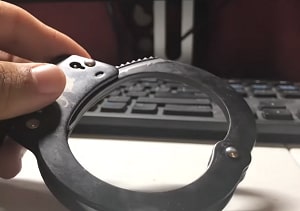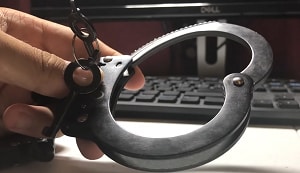Are you a policeman, or do you own a handcuff for protection? You must know that doubling-locking your modern handcuffs is an important principle when using your possession.
Double-locking promotes upgraded security as it is almost impossible to pick double lock handcuffs. It also lessens your liability as it protects the subject from injury or nerve damage when you tighten handcuffs.
Those events make the handcuffs almost useless and harmful at the same time.
So, this guide on how to double lock handcuffs will walk you through different methods of double-locking your model-specific handcuff.
Table of Contents
Step-by-step to Double Lock Handcuffs
As the world changes, more bad guys are becoming more adept to unlock handcuffs without key, and cops are becoming more aggressive in putting on cuffs.
That’s why law enforcement professionals made a notable development in the standard single-locked handcuffs, introducing double-locking handcuffs. There are many ways to double-lock handcuffs—truth be told, they can sometimes be confusing.
Here are the detailed steps to activate the double-locking system of your model-specific handcuff.
Step 1: Identify your handcuff
Since handcuffs’ double locks differ depending on their manufacturer, you first need to identify what kind of double-locking mechanism is used in your possession.
Conventionally, three types of double locks are recognized by law enforcement and used in their duties.
- Pinhole lock- This locking method requires you to insert the key pin in the pinhole to engage the double lock. This locking mechanism is present in all ASP handcuffs and some Smith and Wesson models.
- Button pin lock- This double-locking mechanism is ideal for a low-light situation. It only requires the restrainer to feel the button and push it down to engage the double lock, which makes the restraining process safer.
- Lever lock- This double-locking system offers a safer and easier restraining process, as the restrainer only needs to pull the lever to activate the double lock.
Step 2: Close the ratchet arm
Regardless of its double-locking system, every handcuff requires you to engage its primary lock by pushing the ratchet arm into the double strand or the cuff’s body. This way, the ratchet catcher inside will stop the cuff from opening.
However, always keep in mind to tighten the handcuffs just enough. Not too loose to risk the security of the restrainer, yet not too tight to injure or damage the subject’s circulation.
Step 3: Engage the double lock
You must double lock your handcuff to ensure that the cuff won’t tighten even further. This locking system would also make the tampering or picking of handcuff locks harder.
Although effective, some still missed and sometimes got confused about how to double lock their handcuffs. It is because double-locking has different ways to activate depending on the manufacturer.
- With Pinhole double lock
A slot for the double lock is one of the most common double-locking systems for a handcuff. This system is often used to double lock Vipertek handcuffs and other standard ones.
You will need a key pin, usually attached to the handcuff key, to engage the double lock.
- Find the double lock slot in the body of the cuff. It is sometimes located at the left end of the plate or in the front with the primary keyhole.
- Insert the top of your key—the key pin in the pinhole. The key pin must push the pin sitting inside.
- Remove the key pin and see if the pin is not in its position; if it’s not there, then the double lock is activated.
- To disengage it, insert the primary key into the main keyhole and rotate it counter-clockwise.
- Check if the pin is back to its original position.
The logic here is that picking the pin will push the double lock into its position and stop the handcuff from ratcheting in and out.
- Note: If you ever lost key to your handcuff, you can use others’ to activate the double lock.
- With Button pin double lock
Who wouldn’t want a safer and faster restraining process, right? Thankfully, handcuff manufacturers started making handcuffs with double lock switch, which only requires a simple pushing-down button to activate the double lock.
- To confirm if your handcuff has a double-locking button, check the outer top edge of the cuff just underneath the double strand.
- Push the button down to engage the double lock.
- You must hear or at least feel the pin click to confirm if it’s engaged.
- With Lever double lock
Lever double lock handcuffs are yet another keyless innovation that promotes a safer and faster process. This locking system is used to double lock Smith and Wesson handcuffs, specifically the M&P model 100.
- Look underneath the plate of each cuff and locate the adjustable lever.
- Pull the lever away from the primary keyhole to activate the double lock.
- Make sure the lever is at its furthest to ensure the double lock is engaged.
FAQs
What is a double locking lock?
A double-locking lock is an essential device in your handcuffs that promotes a safer restraining process for both the user and the subject. A handcuff with an enabled dual lock has an additional mechanism to support the primary lock.
How are handcuffs double-locked?
The internal process of making your handcuffs double lock are maneuvered by the ratchet catcher (the primary lock), the lock spring, and the double lock.
The key pins or any mechanism that activates the double lock will move it to its proper position under the lock spring and ratchet catcher.
How to disengage the double lock?
Since there are different double-locking systems, there are also other ways to disengage your handcuff’s double lock.
- If you have a pinhole lock, you can unlock it in the main keyhole using the primary key. Rotate it counterclockwise to disengage the double lock.
- If you have a button pin double lock, simply click the button to disengage it. You must feel or hear a click in the handcuff.
- If you have a lever double lock, just put the lever back in its original position, and this will deactivate the double lock.
Conclusion
Restraining bad guys is especially hard when you use standard, single-locking handcuffs as criminals become more adept with several lock-picking skills. Thankfully, dual locking handcuffs are now available on the market to help us.
However, some handcuff owners are still confused about how double locking handcuffs work. So, keep yourself and the subject safe from any potential threat and injury by following this guide on how to double lock handcuffs.

I am the last member to join Revolar and might be just the luckiest to work with dedicated people like Teddy and John. Our team has established a process where my only job is writing the best content to deliver incredible ideas and guides.






